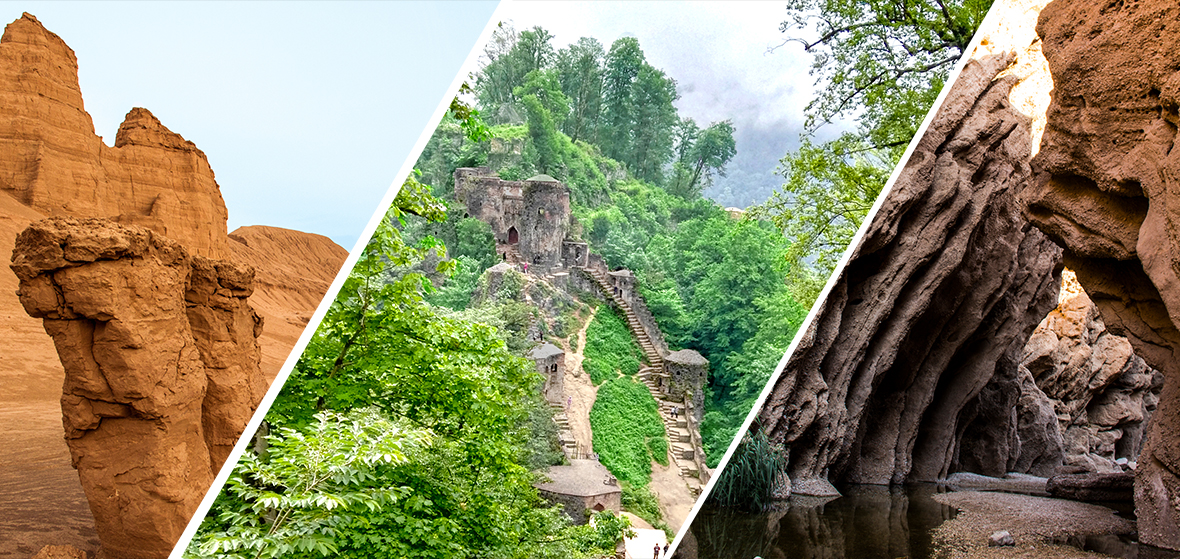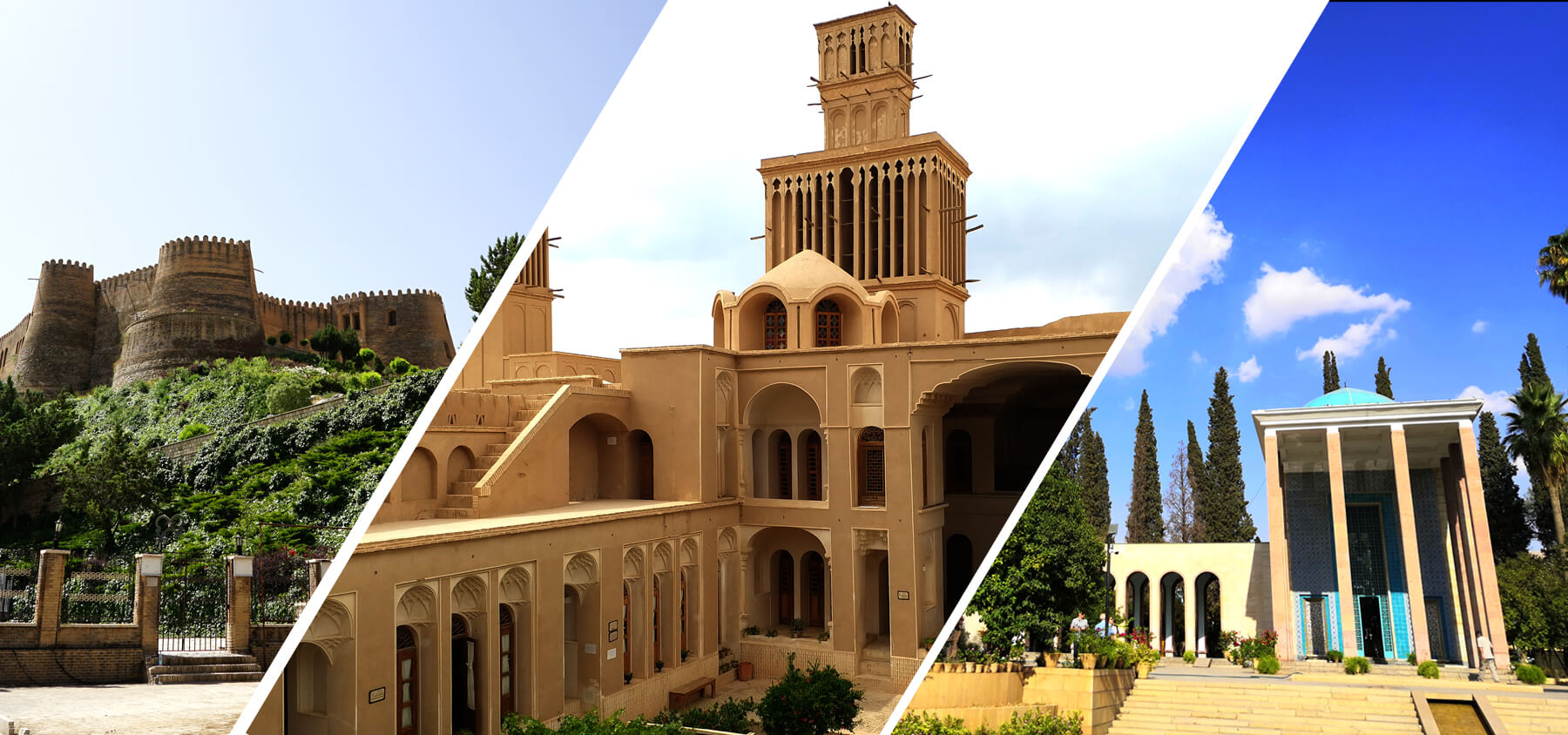Khorramabad
Situated on Zagros Mountain, the ancient city of Khorramabad with thousands of years of history is the capital of Lorrestan province in mid-west of Iran. Presence of valuable historical attractions, natural untouched sights, suitable weather round the year especially in the spring, and the hospitality of its inhabitants have made Khorramabad one of the main tourist attractions in the west of the country.
According to the 2016 census, 373,416 persons in 86,840 families live in Khorramabad. The city population is predominantly Lore and Lak, although the two groups are closely related.
The city is located at a height of 1.5 m above the sea level in the Zagros valley with a Mediterranean climate and high rainfall, especially in spring and winter.
Khorramabad has more than 500,000 hectares of grasslands, more than 400,000 hectares of which are forest-grass-lands. The Zagros forests are among the most valuable forest-reserves in the world.
Khorramabad economy is largely based on agriculture, livestock, horticulture, handicrafts and to some extent the manufacturing industries. The residents of Khorramabad are generally of the Feily population. The Feily themselves are part of the Lore people. There are also a number of Lak tribes living in the city.
The rise and fall of different dynasties and governments in Khorramabad history have led to the emergence of historic remains and cultures in the area.
In the present location of Khorramabad, there was a city of the Elamite called Khaydalu, and by the order of Shapur II of the Sassanid (309-379), the city of Shapourkhast was built on its ruins. Shapourkhast was completely destroyed after Mongol invasion of Iran. The existence of the Falak-al-Aflak or the Shapourkhast fortress testifies that Khorramabad was one of the most important cities of western Iran in the Sassanid era.
Khorramabad has been the capital of Al-Hasanuyeh, the Hezaraspian, and the Atabakan Lur Kochak governments.
Khorramabad retained its importance and flourished during the Safavid dynasty (1501-1722) after the extinction of the Atabakan of Lorrestan dynasty. The Safavid Bridge which is listed as a National Iranian monument was built during the period. Ordered by King Tahmaseb I, the Jamea mosque of Khorramabad was also built in the Safavid era. The city became the headquarters of the Feily Lorrestan Governorate. Khorramabad city was almost completely destroyed by the Ottoman army’s invasion of western Iran.
Khorramabad was confined to neighborhoods of the Falak al-Aflak fortress such as the district behind Bazar, The Dalalan entrance district, and Baba Taher entrance during the Qajar period (1789-1925). This period can be considered as the beginning of the migration from small towns of Lorrestan province and villages to Khorramabad.
Khorramabad has been selected by the United Nations Regional Office for Human Settlements as a model tourism city. The choice is to implement a tourism-based urban sustainable development plan. The focus of this project is the Falk Al-Falak Fortress and organizing of the surrounding area of the fortress as well as restoring and preserving other archeological sites throughout the city of Khorramabad.
There are many fascinating historical and natural tourist attractions in the city of Khorramabad, such as Falak al-Aflak fortress, Monareh-e Ajori (The Brick Minaret), Pol-e Shapouri (The Shapur Bridge), Gerdab-e Sangi (The Stone Whirlpool), Sang Nebeshteh (Petroglyph), Lake Qiu, and the Makhmal Koh Tourist Complex.
Falak al-Aflak fortress
The ancient fortress of Falak al-Falak or also known as the Shapourkhast Fortress, dating back to the Sassanid period (224-651 CE), is located on the highest point of a hill in Khorramabad city. The castle now has 8 towers but in the past, it had 12 and therefore, it is also known as the Twelve Tower Fortress. Falak Al Aflak Castle completely overlooks the city with a total area of about 5,300 m2.
The interior is divided into four relatively large halls around two courtyards and a number of rooms and smaller halls. The building was restored in the Fath Ali Qajar era (1797-1834), with a high tower added to it, and has since been called the Falak al-Aflak Castle.
During the late Pahlavi period, the castle was used as a museum, but at the Iran-Iraq war, museum objects were removed for security reasons. A part of the building was repaired for photo, stone and pottery exhibitions after the war was over. The Museum of Archeology was established in 1999. A traditional teahouse was also founded in the north part of the first courtyard in the same year. The Museum of Anthropology is located in the southern part of the second courtyard.
Monareh-e Ajori (the Brick Minaret)
The Brick minaret is one of the ancient monuments of Khorramabad. This 900-year-old monument is located in the south of Khorramabad, near the old town of Shapourkhast, on a stone foundation. It has 5.5 meters of diameter at the base and a height of 30 meters. The Monareh-e Ajori was apparently used to guide convoys approaching the ancient city of Shapourkhast.
Sang Nebeshteh
The Sang Nebeshteh is a petroglyph in the Kufic script located in the southern part of Khorramabad. The stone is carved into a rectangular cube engraved with documents for grazing ownership of the cattle at that time. The petroglyph is built in such a way that its four corners point towards the archaeological sites of the Broken Bridge (Pol-e Shapoury), Brick Minaret, Falak Al Aflak fortress, and Musa Pool. This rock has been cut and moved in recent years due to the development of the Shariati Boulevard of Khorramabad.
The Shapouri Bridge
The Broken Bridge or the Shapouri Bridge is the remains of one of the architectural masterpieces of the Sassanid period. The bridge is located on the south side of Falak al-Falak fortress in the south of Khorramabad. The Shapouri Bridge has been the connection between west of Lorrestan province to the east and from there to Khuzestan and the city of Tisfon (the Sasanian capital). The bridge has had 28 arches or openings out of which there are only three arches left today. The Shapouri Bridge was built with a height of 16 meters and rhombus-shaped breakwaters to reduce flood damage.
Gerdab Sangi
The Stone Whirlpool or the Gerdab Sangi is one of the monuments of the Sassanid period in Khorramabad. The stone Whirlpool is located in the old texture of central Khorramabad next to Takhti Square. This circular shape stone whirlpool was built around spring to regulate its outflow in order to transfer the water to various parts of the ancient city of Shapourkhast through canals.
The Lake Qiu
Lake Qiu is one of the most beautiful natural attractions of Khorramabad which is located in the northwest of the city. Known as the Turquoise of Khorramabad, the lake is a lovely attraction with an area of over 7 hectares and a depth of 3 to 7 meters has become a habitat for aquatic animals and migratory and native birds. It is known as the Qiu Lake because of its indigo color water, which in the local dialect of Khorramabad is pronounced “Qiu”. Recreational facilities along with beautiful scenery have made the lake one of the most popular places in Khorramabad.
The Makhmal Koh Tourist Complex
The Makhmal Koh (Mount Velvet) Tourist Complex is one of the nicest places for recreation and excursion in different seasons of the year, especially in the spring and winter. Located in the northeast of Khorramabad the Velvet Mount is one of the heights of the Zagros Mountains in Lorrestan province where a promenade and forest park in the northern part of a strait called Shabikhoun are set up for tourists. The area has stunning sceneries and landscapes and is a great place for climbing enthusiasts. Alongside these natural beauties, the presence of a beautiful waterfall called “Abshar-e Makhmal Koh”, located in the Makhmal valley, has added to the popularity and beauty of this area in Lorrestan.
Souvenirs of Khorramabad
Of the most important souvenirs of Khorramabad are Gilim (Drugget), Jajim (woven woolen cloth), and woodworks. Delicious foods such as Tarkhine Pottage (made of Tarhana, fermented yogurt, and barley), Nan-e Saji, (a type of local traditional bread), Dairy products, a cookie called Kak, and Honey are also among souvenirs of Khorramabad.
Iran UNESCO Sites in 40 Days


Western Iran


Forty Days & Nights


ZAGROS Journey


From Mountains to the Desert


A Month in Iran


From Medes empire up to Achaemenes – 10 Days

The Glory of Iran -17 Days










